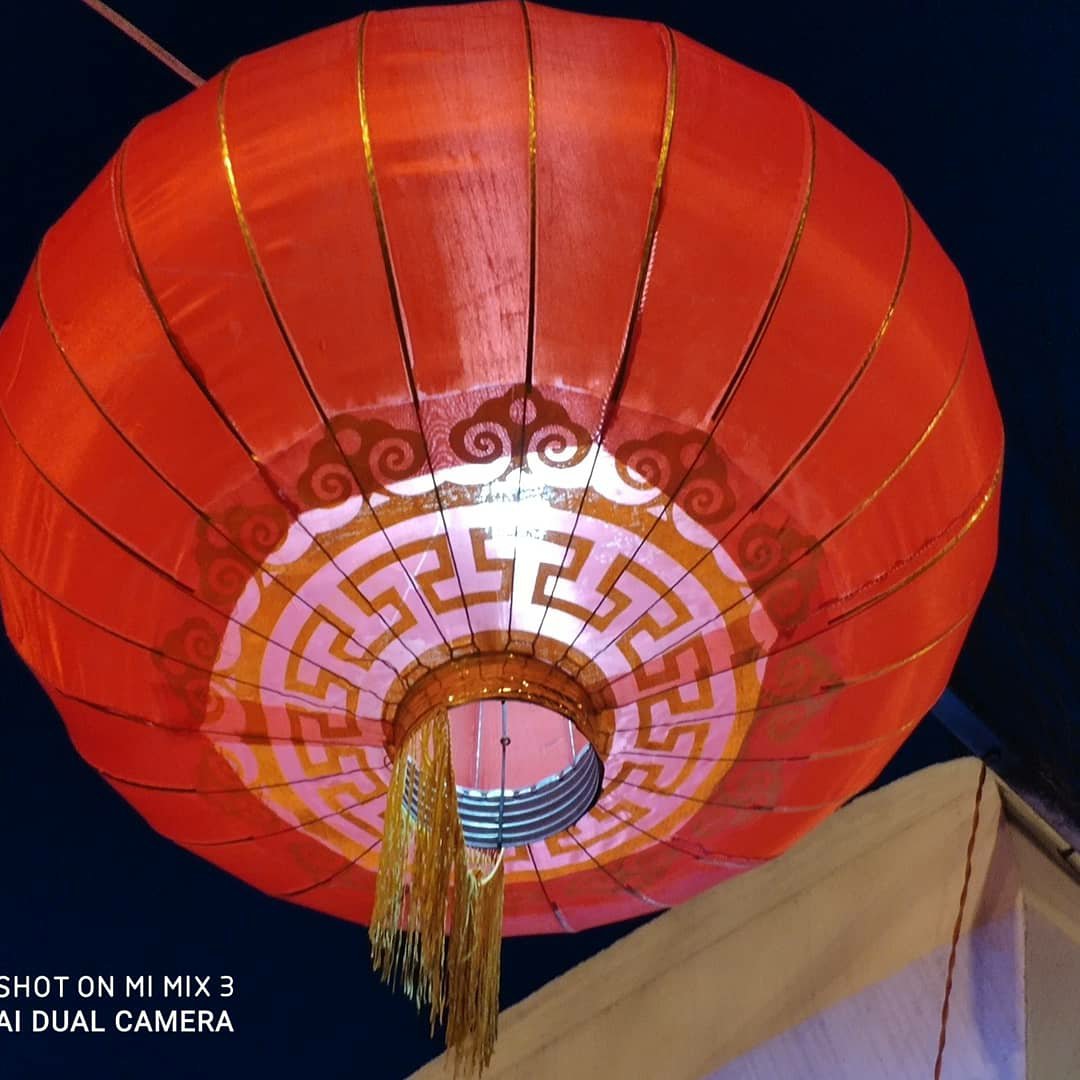Kitchen God (Zao Jun) was on my bus! Hope everyone gets a good report this year

Kitchen God (Zao Jun) was on my bus! Hope everyone gets a good report this year

Today (January 17th) is the ‘Little Chinese New Year‘ – also known as the Kitchen God Festival (北方小年)! It’s the day to start the ‘pre-new year’ preparations.

There are two versions of the holiday:
*Based on students’ responses, it appears there is a difference in when the holiday is celebrated based on geographic location. Same holiday, different days.

In ancient Chinese culture, the stove was a very important part of the family’s wealth. Closely related to signs of prosperity and unity.
The home to house the stove and food to cook within were signs of abundance and wealth. While the family who ate food produced in the same oven represented a family at peace. When a younger son started his own family line, he would produce his own stove and carefully shift coals over to show that his household now stood independent. (Source)
It is little surprise then that myths surrounding a kitchen god formed.
The stories vary, but the most popular version is one which started in the BC era. There once was a man named Zao Jun (灶君) who for some reason did wrong by his wife. Some say he had an affair with a younger woman, other that he was poor and sold his wife to another man in marriage.
Whatever the reason, he then fell into greater poverty and misery. Wandering earth, he happened upon his wife again in later years and confessed his regret and sorrow at his past actions. A good cook and virtuous woman, his wife forgave him and offered him some food and aid.
Unfortunately, he is either overwhelmed with guilt at her kindness or misunderstands her good intentions (depends on the version) and commits suicide in grief. The heavens take pity on the poor man and turn him into a kitchen god where he is reunited with his wife.
Modern versions of the tradition hold that each home hosts their own ‘Kitchen God’ who sits watch over the family throughout the year. He is assisted by his wife who keeps a careful written record of the family’s good and bad deeds. He and his wife may even by represented with a portrait or painting of his depiction placed in the kitchen where he keeps his watchful eye.
Then, during the week before the new year, the kitchen god and his wife take their account back to the immortal world. There he gives his report to the Jade Emperor who will pass judgment and issue corresponding rewards or punishments to the family.
The goal is to receive blessings, and make a good start for next year. It’s a time of reconciling, cleaning the house, and putting old misdeeds and history aside. A time to get everything ready for the new year to come.
OUT WITH THE OLD, IN WITH THE NEW

Even families who don’t believe in the legend anymore still participate in the fun traditions surrounding it. Some of the fun activities include:

One of our favorites comes from a student who shared that many people will eat sticky maltose-based candies and offer them as sacrifices. Apparently their hope is to either bribe the kitchen god with sweets or stick the mouth shut of his wife because she’s too gossipy.
Either way, we’re always in where candy is involved!
It’s mostly a kind of ‘spring cleaning’ festival, but be careful – don’t clean on the first of the holiday or you’ll offend the kitchen god! As one student put it ‘don’t throw out the rubbish or he’ll think you see him as rubbish’. So get your cleaning in now!

*The Monkey 🐵King’s Chinese name is Sun WuKong. Wu is the Chinese word for “5” while “Oh” is the Korean word for “5” So Son Oh Gong is just a rewrite of Sun WuKong. 😋


Did you eat your porridge yet?!?
Today (January 24) is the Laba Festival ( 腊八) or Rice Porridge Festival in China! On the Chinese lunar calendar, La is the 12th month of the year, and ba represents the 8th day of that month. So basically Laba means 12th month, 8th day. And that day is today!!!
The Laba Festival (like so many Chinese festivals) is mostly famous as a food holiday, one where the Chinese cook and eat delicious foods like the Dumplings of the Ghost Festival, the Moon Cakes of the Moon Festival, etc. On the Laba Festival, people make different kinds of rice porridge filled with beans, nuts, dried fruit, etc.
The next Laba will fall on January 13, 2019.

According to the old stories, the Laba Festival was traditionally a day of offering sacrifices to the ancestors in honor of celebrating the harvest season. I’m not really sure if this was the “upcoming planting for later harvest” festival or a “after the end of winter wheat harvest” festival, none of my students seemed to know either. However, we do know that in the old days, the word for ‘sacrificing to the ancestors’ was ‘La’ and it happened on the La month (January-ish).
Sometime during the Southern and Northern Dynasties (1st century AD) the festival was finally fixed to the 8th day of the La month. The myths say that the number 8 “Ba” was chosen because it was on that day (La Ba – 8th day of La month) that Sakyamuni (Gautama Buddha), an Indian prince, was able to finally achieve enlightenment and rise as a Buddha. Sakyamuni was the son of an emperor from northern India who grew sad when he saw his people’s suffering. He eventually abandoned the throne and chose to seek Buddhist enlightenment. One day, starving and tired, a young shepherd girl offered him porridge made of rice, giving him strength to continue on his way. A few years later, he attained enlightenment on the 8th day of the 12th month. In honor of his suffering and success, people began offering rice porridge to the Buddha every year on that day.
Over time, the harvest festival and the Buddhist festival came together in one big celebration.

Here in Dongbei (Northeast China), my students are all wishing each other Laba Day greetings and reminding each other to eat porridge. The porridge they are talking about is sometimes called Laba Congee instead. There are different variations; for example, some have lotus seeds and others have peas, fruit or nuts in it. Some have all kinds of stuff mixed together. Apparently some areas of China have meat or tofu in it, and some vegetables, because my friend posted a picture of that kind.
Because it is the 8th day, the Chinese like to add in 8 ingredients to make the porridge (I love China and their love of numbers). So they boil it like normal porridge, with maybe some extra sugar to sweeten it. It takes several hours to make, especially the beans which have to soak.
The first bowl is offered to the ancestors (for those who still honor them — it’s not quite as common here in China anymore, but the thought is there). Then some can be sent to neighbors or friends, grandparents, etc. Then the family eats the remainder together. Hopefully, you have plenty! If there is some left over, it means next year will be bountiful! (Remember this is still a harvest festival).

Apparently in some of the old times, the businessmen and government officials would give it to the employees on Laba Festival as a treat, but it’s history goes even further back than that. Some say it was originally served only to the ancestors during the Hong dynasty and later became more commonly served in the Song dynasty. A few say that it is made in remembrance of an emperor who grew up poor eating only congee and later asked everyone in the empire to eat it once a year to remember their origins. Whatever the origins, Laba porridge has been part of the festival since the Song Dynasty (960-1279 AD).
Some people will also make Laba Garlic as well. A couple students I know have posted pictures of the process on their WeChat. They peel the garlic and add it to a jar. Then they fill the jar up with rice vinegar and sugar. Eventually it turns GREEN! They’ll keep it until the Spring Festival when they eat it for the holiday.

Happy Dragon Boat Festival! Today in #China we are celebrating the Duanwu #端午 festival! It’s been a Holiday here for more than 2000 years!
It celebrates the Famous #poet #quyuan. Devoted to #China 🇨🇳, he wrote beautiful poems about its history, nature, and people. When the invading Qin armies approached, he chose to drown himself rather than see his beloved country fall. Although they sent out many #dragon boats to look for him, they could not save him in time.
So to commemorate his memory, every year they eat #粽子 (aka Zongzi), a sticky #rice #treat wrapped in banana leaves. And the big cities send out Dragon #boats for big battles and races on the lakes and rivers! Cool!
 Wanna climb the pagoda? 😊 The beautiful sight greeted me on the way to classes. It’s a lovely pagoda up on the hill and part of a park in the middle of our campus. I love all the #colors!
Wanna climb the pagoda? 😊 The beautiful sight greeted me on the way to classes. It’s a lovely pagoda up on the hill and part of a park in the middle of our campus. I love all the #colors!
**Just don’t go up there at night. 😂 It’s pretty much destined to live as a kind of ‘kissing kastle’ sort of place at night. When all the students have 7 other kids in their rooms, couples find privacy here 😜